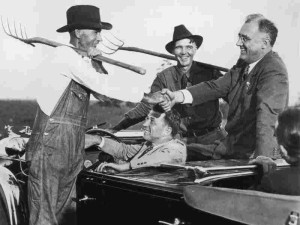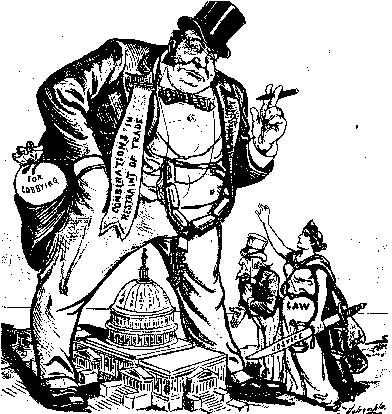
Flop House
A 1937 painting by Edward Millman, Flop House depicts the despair that the New Deal sought to address.
Today’s San Francisco, even more so than other successful cities, is a study of jarring contrasts as sleek skyscrapers rise from streets on which ever-increasing legions of the desperate, destitute, and demented sleep, beg, and offend the sensibilities of tourists and residents alike. Poverty—with all its pathologies—has reached crisis proportions in tandem with pathological wealth.
President Roosevelt’s administration dealt with many of these same problems. By contrast, Washington today is ignoring or actively worsening the social ills that the New Deal tackled head on.
Based on what he witnessed in San Francisco, the 19th Century political economist Henry George explained in his bestseller Progress and Poverty how concentrated wealth produces widespread poverty.

Homeless in San Francisco
Homeless: I used to be your neighbor Source
Such social inequality is the subject of much of the art produced during the New Deal. The Federal Theatre Project’s widely seen play, One-Third of a Nation, was based on Roosevelt’s 1936 inaugural declaration in which he said he saw “one third of a nation ill-clad, ill-housed, and ill-fed”— and promised to use the federal government to do what the market could not do to alleviate that disgrace.
It is telling that the opulent San Francisco Museum of Modern Art occupies a site in a neighborhood once known for flophouses—the cheap housing that urban redevelopment cleared away to accommodate the city’s expanding financial and retail districts. Flophouses gave seasonal workers and those too old to work marginal shelter, but even as that housing was being eliminated by redevelopment, so were their jobs by automation, off-shoring, and market downturns.
Nowhere are the multiple dysfunctions associated with poverty more evident than at downtown San Francisco’s United Nations Plaza. A front-page article in the San Francisco Chronicle—“Complaints skyrocket over syringes on streets in S.F.”—accompanied a photo of a city worker collecting used needles in a long-neglected fountain commemorating the founding of the United Nations in 1945 just three blocks away.

Homeless Man Sleeps on a Bench
FDR’s Second Bill of Rights: “The right of every family to a decent home.”
Article 25 of the Universal Declaration of Human Rights laboriously shepherded through the UN by Eleanor Roosevelt in 1948 in hopes of ending future wars reads:
Everyone has the right to a standard of living adequate for the health and well-being of himself and of his family, including food, clothing, housing, and medical care and social services, and the right to security in the event of unemployment, sickness, disability, widowhood, old age, or other lack of livelihood in circumstances beyond his control.
It codified much of what Franklin Roosevelt had succinctly enunciated as a Second Bill of Rights in his fourth inaugural address, including “The right to a useful and remunerative job” and “The right of every family to a decent home.
Labor Secretary Francis Perkins recalled that “”Decent’ was the word (Roosevelt) often used to express what he meant by a proper, adequate, and intelligent way of living.”
That we have opted for indecency as a way of life is evermore evident on our streets and battlegrounds as they become one and the same.


